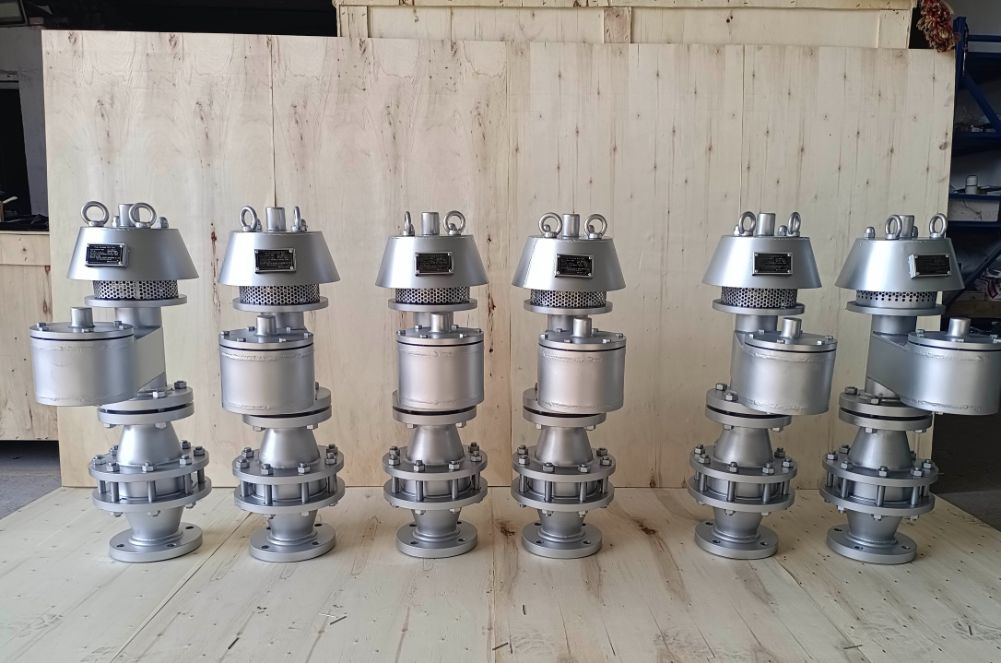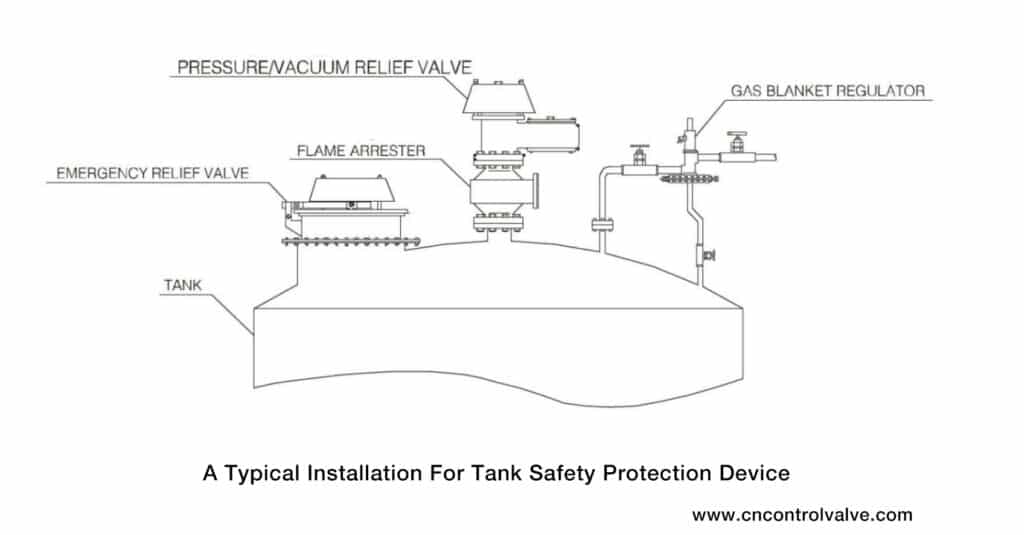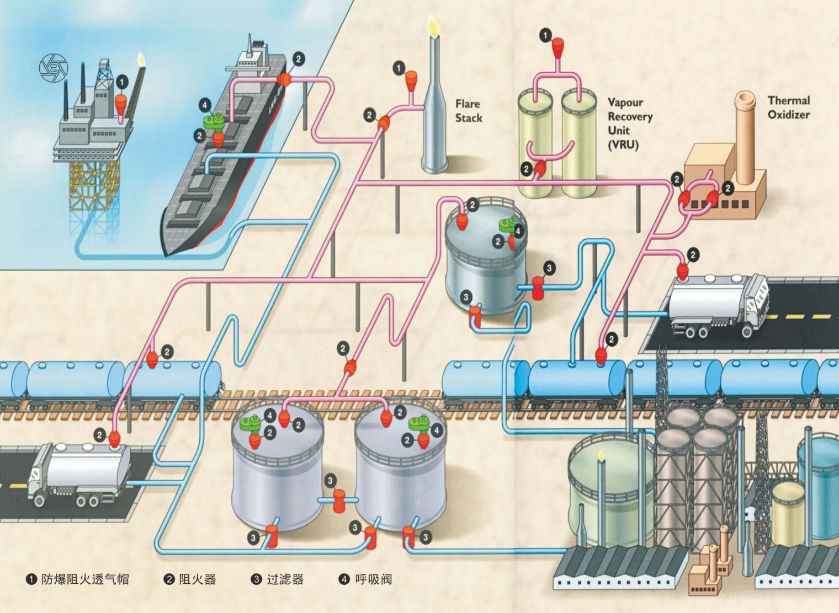At THINKTANK, we design and manufacture state-of-the-art pressure/vacuum relief valves to ensure optimal performance and protection for your storage tanks and process vessels. Our valves are crafted to exceed industry standards and offer unmatched durability, reliability, and efficiency. This article will provide a comprehensive overview of our pressure vacuum and pressure relief valves and applications.

Understanding Pressure Vacuum Relief Valves
Pressure/Vacuum relief valves (PVRVs) are critical components in various industries, such as petrochemical, pharmaceutical, and oil and gas, where they play an essential role in maintaining the safety and integrity of storage tanks and process vessels. One of the reputable valve manufacturers supplying these products is THINKTANK.
THINKTANK is a well-known brand in the valve manufacturing industry, supplying a wide range of industrial valves, including pressure/vacuum relief valves. Our high-quality products are designed to meet the rigorous standards and requirements of various industries, ensuring reliable and efficient performance.

A pressure/vacuum relief valve functions to protect storage tanks and process vessels from excessive pressure and vacuum conditions. These valves automatically open and close to release or admit air, maintaining the tank’s internal pressure within a safe operating range. This safety device prevents potential damage to the tanks and vessels, as well as minimizes the risk of leaks, spills, and environmental hazards.
Design Features For Pressure/Vacuum Relief Valve
- Size: 2″ ~12″ (DN50-DN300)
- API7100 series breathing valve discharge port is the same as the inlet, which is convenient for the end-users to choose.
- API8100 series breathing valve discharge port is larger than the inlet to increase the exhaust volume.
- Breathing mode: discharge, inhalation atmosphere.
- A Rainproof cap is easy to disassemble and install, so as to facilitate inspection and maintenance of equipment, protective net can stop external debris from entering the breathing port.
- According to the user’s needs, can add an explosion-proof flame arrester, inhalation bend, jacket, blowing hole, lining, dehumidification, and other functions (need to confirm before ordering);
- Flange standard according to ANSI B16.5, according to user requirements can choose HG series, GB series, SH series, JIS series, EN series.
Setting Pressure of 7100/8100 Pressure/Vacuum Relief Valve
| Model | 7110.8110 | 7112, 8112 | 7113.8113 | 7115.8115 |
| Positive Pressure Setting(KPa) | 0.2-6.9 | 0.2-6.9 | 6.9-103.4 | 6.9-103.4 |
| Negative Pressure Setting(KPa) | -0.2–4.3 | -4.3~-82 | -0.2—4.3 | -4.3—82 |

Dimension Sheet For 7110, 7112, 7113, 7115 Series
| Size | 2″[50] | 3″(80] | 4″1100] | 6″[150] | 8″[200] | 10″[250| | 12″ [300] |
| L | 301 | 368 | 416 | 525 | 675 | 824 | 967 |
| Hl | 290 | 352 | 393 | 490 | 622 | 746 | 876 |
| H2 | 394 | 422 | 505 | 636 | 870 | 1030 | 1230 |
Dimension Sheet For 8110, 8112, 8113, 8115 Series
| Size | 2″[50] | 3″[80] | 4″[100] | 6″[150] | 8″ [200] | 10″[250] | 12″[300] |
| L | 322 | 405 | 473 | 620 | 770 | 912 | 1075 |
| H1 | 335 | 378 | 466 | 613 | 701 | 830 | 956 |
| H2 | 403 | 490 | 615 | 860 | 985 | 1182 | 1225 |
Key Features of THINKTANK Pressure/Vacuum Relief Valves
1. Versatile design
Our pressure vacuum relief valves are available in various sizes, materials, and configurations to suit your specific application requirements.
2. High-quality materials
THINKTANK’s PVRVs are manufactured using durable materials, such as stainless steel, to ensure long-lasting performance and resistance to corrosion.
3. Advanced sealing technology
Our valves feature innovative sealing technologies that provide exceptional leak-tight performance, even in challenging operating conditions.
4. Customization
THINKTANK provides tailored solutions to meet specific application requirements, ensuring the valves fit seamlessly into various industrial processes.
5. Compliance with industry standards
THINKTANK’s PVRVs are designed and manufactured to comply with relevant industry standards, such as API 2000 and ISO 28300, ensuring safety and reliability.
6. Easy installation and maintenance:
Our valves are designed for easy installation, with simple maintenance procedures to ensure optimal performance and long service life.
Pressure Vacuum Relief Valve Applications
Pressure Vacuum Relief Valves (PVRVs) are commonly used in various industries to protect storage tanks and process vessels from excessive pressure and vacuum conditions. They are essential safety devices that maintain the internal pressure of a tank or vessel within a safe operating range, preventing potential damage, leaks, and environmental hazards. Here are some typical applications and detailed conditions for PVRVs.

Petrochemical Industry
PVRVs are extensively used in the petrochemical industry to protect storage tanks containing volatile organic compounds (VOCs), such as benzene, toluene, and xylene. The valves release excess pressure or admit air to maintain the internal pressure within a predetermined range, preventing tank rupture or implosion.
Project Example: A petrochemical plant required PVRVs to manage pressure and vacuum fluctuations in several storage tanks containing different VOCs. THINKTANK provided customized PVRVs to meet the specific pressure and vacuum settings for each tank, ensuring safe operation while minimizing VOC vapor emissions.
Oil and Gas Industry
In the oil and gas industry, PVRVs are the equipment used to protect storage tanks containing crude oil, gasoline, diesel, and other petroleum products. These valves help maintain safe pressure levels during filling, emptying, or temperature changes.
Project Example: An oil refinery needed PVRVs for its crude oil storage tanks. The refinery experienced significant pressure fluctuations due to temperature changes and tank filling and emptying operations. THINKTANK supplied PVRVs with appropriate pressure and vacuum settings to maintain the tanks’ integrity and minimize the risk of environmental hazards.
Pharmaceutical Industry
PVRVs are used in the pharmaceutical industry to protect process vessels and reactors during manufacturing operations. They maintain the required pressure levels in the vessels, ensuring the stability and safety of the chemical reactions.
Project Example: A pharmaceutical company required PVRVs for its chemical reactors involved in producing active pharmaceutical ingredients (APIs). THINKTANK provided PVRVs with the necessary pressure and vacuum settings and materials compatible with the chemicals used in the reactors, ensuring safe and efficient production processes.
Food and Beverage Industry
PVRVs are employed in the food and beverage industry to protect storage tanks containing liquid products, such as juices, wines, and edible oils. The valves prevent tank damage and product spoilage by maintaining stable internal pressure.
Project Example: A winery needed PVRVs to protect its wine storage tanks during fermentation and aging processes. THINKTANK supplied PVRVs with the appropriate pressure and vacuum settings, ensuring the tanks’ safety while preserving the quality of the wine.
Chemical Industry
In the chemical industry, PVRVs are used to protect storage tanks containing hazardous chemicals, such as acids, bases, and solvents. These valves help maintain the proper pressure levels in the tanks, preventing the risk of tank rupture, leaks, or chemical spills.
Project Example: A chemical plant required PVRVs for its sulfuric acid storage tanks. Due to the corrosive nature of sulfuric acid, THINKTANK provided PVRVs made of corrosion-resistant materials, such as Hastelloy, with proper pressure and vacuum settings to ensure the safety and integrity of the storage tanks.

Choosing the Right Pressure Vacuum Relief Valve
Choosing the right Pressure Vacuum Relief Valve (PVRV) is crucial to ensure the safety and efficiency of your storage tanks and process vessels. Here is a step-by-step guide to help you select the appropriate PVRV for your specific application:
Step 1: Determine the application requirements
Before selecting a PVRV, you need to understand the specific requirements of your application. Consider the type of storage tank or process vessel, the stored product or chemical, and the operational conditions (pressure, vacuum, and temperature). This information will help you identify the necessary PVRV specifications.
Step 2: Establish set pressure and vacuum settings
Determine the required pressure and vacuum relief settings for your PVRV. This is typically based on the design pressure and vacuum of the storage tank or process vessel. Consult with the tank or vessel manufacturer or refer to industry standards, such as API 2000, for guidance on appropriate pressure and vacuum settings.
Step 3: Consider flow capacity requirements
The flow capacity of the PVRV is a critical factor in maintaining the proper pressure levels inside the tank or vessel. To determine the required flow capacity, consider factors such as tank size, filling and emptying rates, and thermal effects. Ensure the selected PVRV meets the required flow capacity to provide adequate protection.
Step 4: Choose suitable materials
Select PVRV materials compatible with the stored product or chemical to ensure corrosion resistance and durability. Common materials include stainless steel, carbon steel, and more specialized alloys, such as Hastelloy, for highly corrosive chemicals. Consult with the PVRV manufacturer, like THINKTANK, for guidance on suitable materials for your application.
Step 5: Evaluate PVRV types and designs
Different PVRV designs are available, such as weight-loaded, spring-loaded, and pilot-operated valves. Each type has its advantages and limitations, so choose a PVRV design that best suits your application requirements. Consult with the manufacturer to determine the most appropriate design for your specific needs.
Step 6: Check for industry certifications and standards
Ensure the PVRV manufacturer complies with relevant industry standards and certifications, such as API 2000 and ISO 28300. This ensures the PVRV meets safety and performance requirements for your specific application.
Step 7: Consult with experts
Seek advice from PVRV manufacturers or industry experts, such as THINKTANK, who can provide technical support and recommendations for your specific application. Their expertise will help you make an informed decision when selecting the right PVRV.
Step 8: Consider maintenance and support
Choose a PVRV+ system that is easy to maintain and inspect, reducing downtime and operational costs. Additionally, select a manufacturer with a reputation for providing excellent after-sales support, including spare parts availability and technical assistance.
By following these steps, you can make an informed decision when selecting the right pressure vacuum and pressure relief valve, for your storage tanks and process vessels, ensuring safety, efficiency, and reliability in your industrial processes.

In Conclusion
Pressure vacuum relief valves are crucial components for maintaining the safety and integrity of storage tanks and process vessels across various industries. At THINKTANK, we are committed to providing our customers with high-quality, reliable, and efficient pressure vacuum relief valves that meet or exceed industry standards. By understanding the key features, applications, and selection criteria, you can confidently choose the right pressure vacuum relief and safety valve for your specific needs. Trust THINKTANK for all your pressure vacuum relief valve requirements and experience the benefits of our superior products and services.





